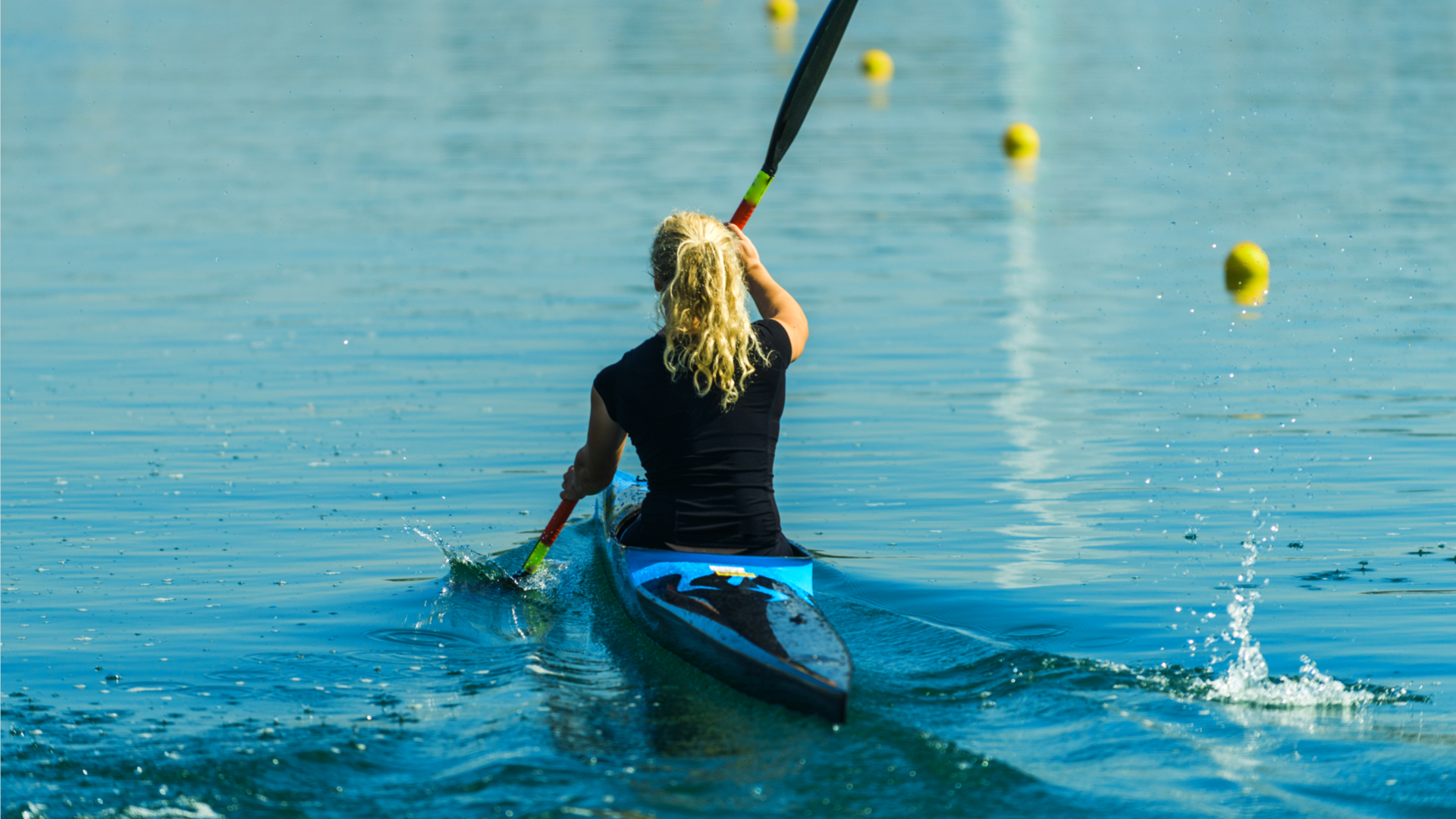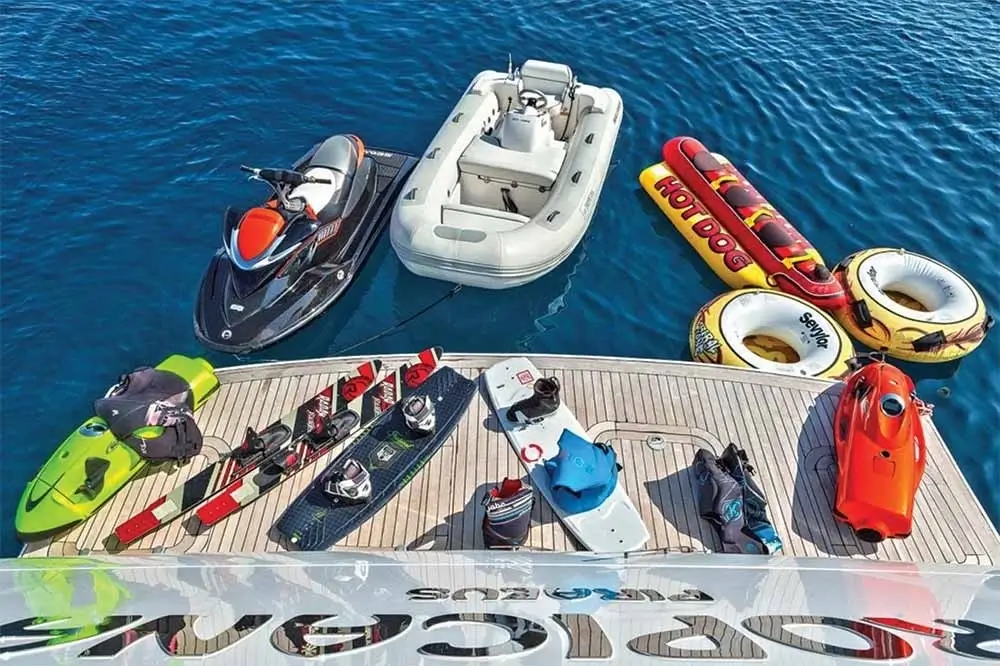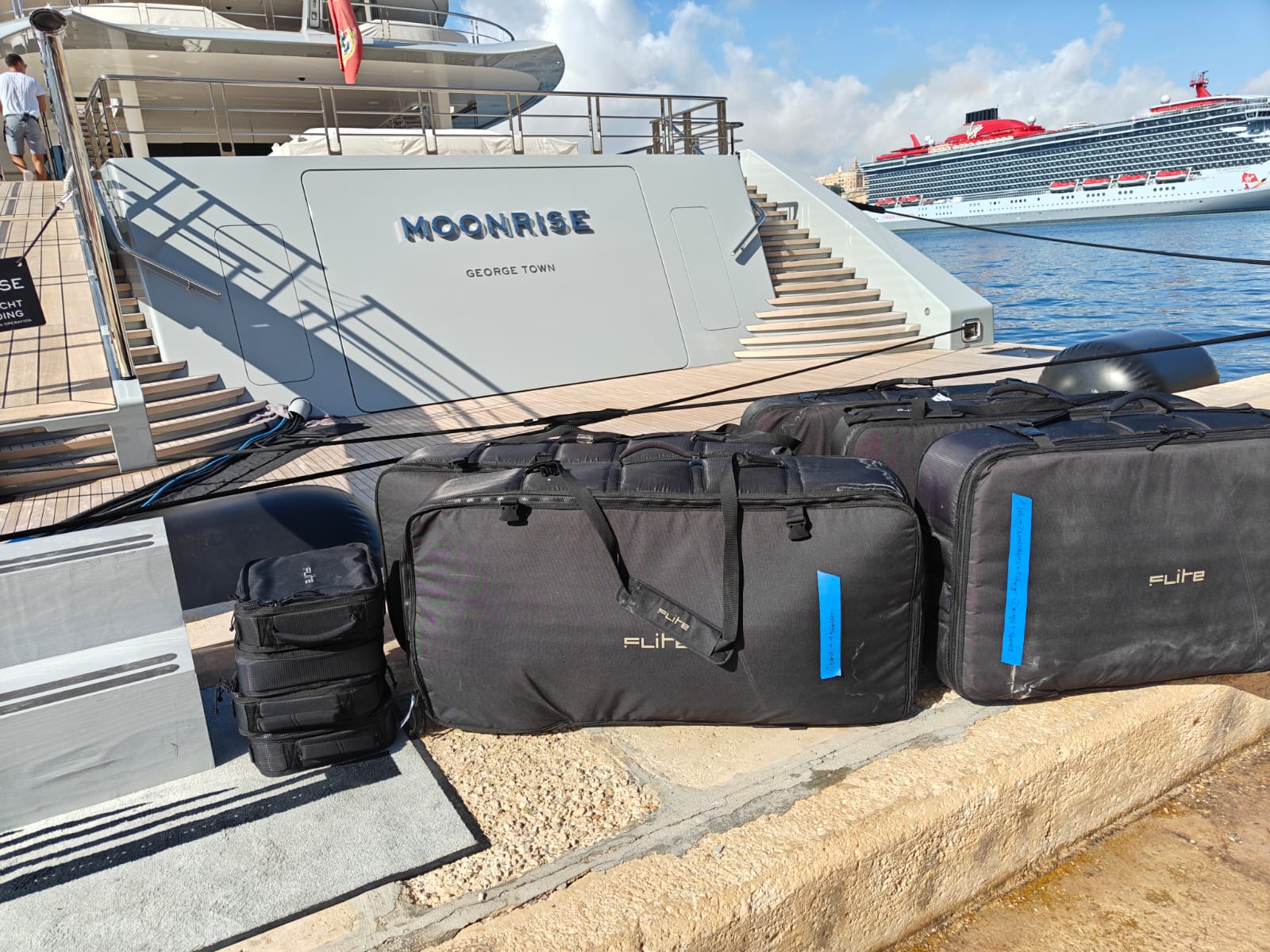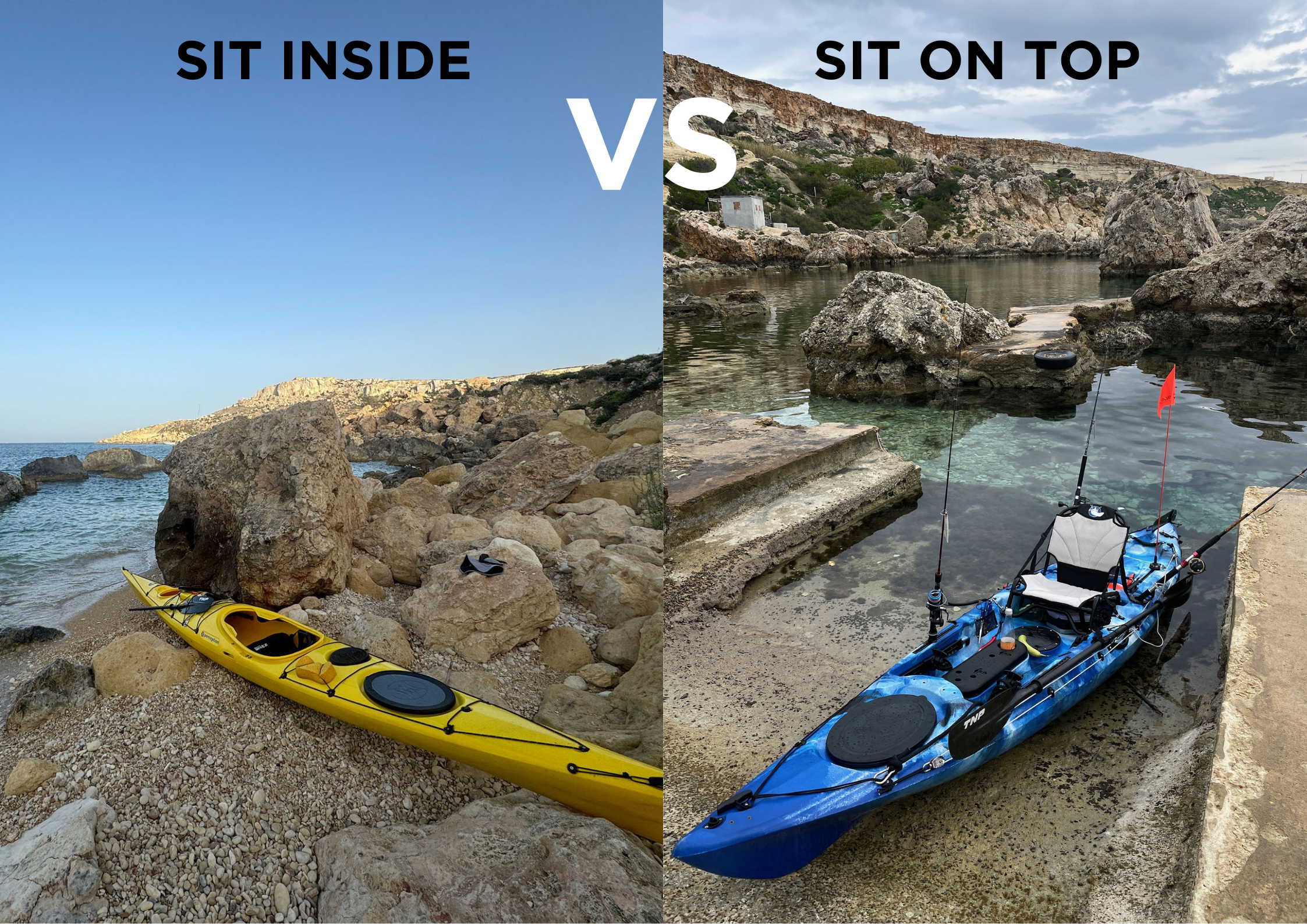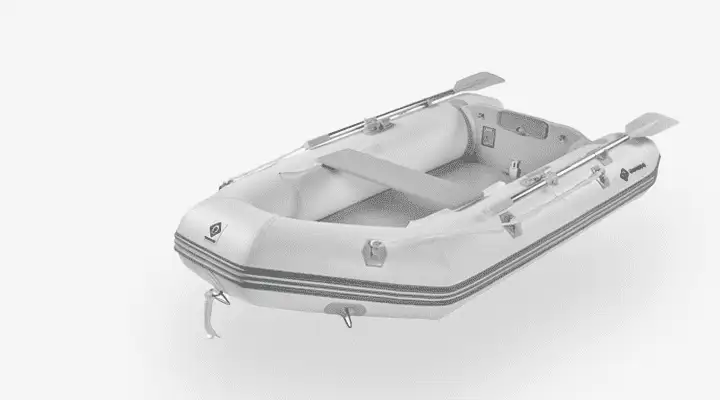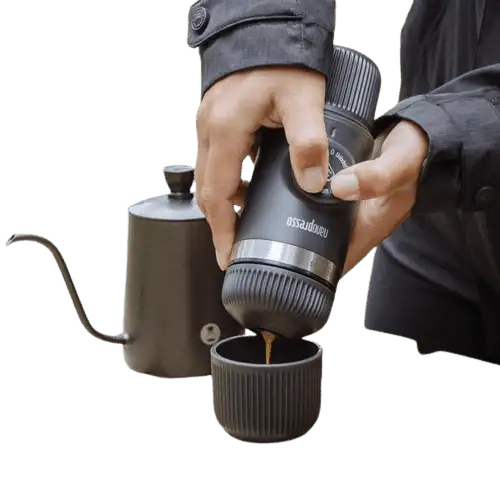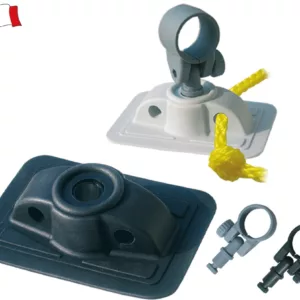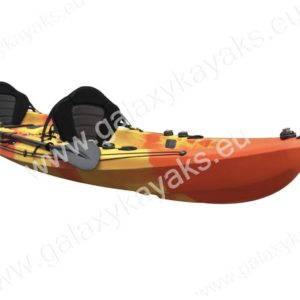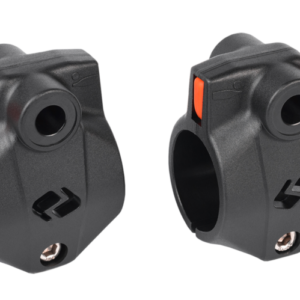Why Kayak Fishing Setup Matters

Your kayak fishing setup can mean the difference between a productive day on the water and a frustrating one. An adequately rigged kayak ensures safety, comfort, and efficiency while giving you the tools to target your catch effectively. A good setup helps you:
- Maximize fishing time by keeping essentials within reach.
- Stay safe in various water conditions.
- Enhance mobility and positioning for better casting.
Whether you’re a seasoned angler or a beginner, investing time in setting up your rig pays dividends in performance and enjoyment.
Choosing the Right Fishing Kayak
Sit-On-Top vs. Sit-In Kayaks: Pros and Cons
Choosing between a sit-on-top or sit-in kayak depends on your preferences and fishing environment:
Sit-on-top kayaks are popular for fishing due to their open design, which provides easy access to gear and better mobility for casting. They’re also self-draining, making them ideal for choppy waters. Additionally, sit-on-top kayaks often have higher weight capacities and customizable storage solutions, making them a top choice for anglers carrying a lot of equipment.
Sit-In Kayaks: While less common for fishing, sit-in kayaks offer better protection from the elements, making them suitable for colder climates. They can be lighter and more efficient for paddling, especially over long distances, but may lack the storage flexibility of sit-on-top options.
Key Features to Look For: Stability, Weight Capacity, and Storage
When you choose a fishing kayak, look for these key features:
Stability: A wide, flat hull provides better stability, allowing you to stand and cast. If you plan to fish in calm lakes or ponds, a kayak with a higher primary stability will suffice. Secondary stability is critical for handling waves and currents for coastal or river fishing.

Weight Capacity: Consider your body weight and the gear you’ll carry to avoid overloading your kayak. Overloading can make it unstable and more challenging to maneuver.
Storage: Look for ample storage options, such as hatches, bungee systems, and tank wells, to keep your equipment secure and organized. Some advanced models even include built-in rod holders and tackle management systems.
Must-Have Gear for Kayak Fishing
Rods, Reels, and Tackle Storage Options
Bring rods and reels suited to your target species and fishing conditions. Shorter rods work well in tight spaces, while longer rods are better for open-water casting. Use tackle boxes, soft bags, or waterproof containers to organize your lures, hooks, and tools. Consider a crate with rod holders for added storage, which can keep your gear upright and easily accessible.
Essential Electronics: Fish Finders and GPS Devices
A high quality fish finder can dramatically increase your success by identifying underwater structures and fish activity. Pair it with GPS to track your location and mark productive fishing spots. Many kayaks are now designed with mounting points specifically for electronics, making installation straightforward. Additionally, some fish finders come with behave functionality, offering a two-in-one solution for anglers looking to optimize their setup.
Safety Equipment: Life Jackets, Whistles, and Communication Tools
Safety should never be overlooked. Always wear a CE-certified life jacket and carry a whistle for emergency whistle communication tools, such as a VHF radio or mobile phone, in a dry bag, which is essential for staying connected. A first aid kit, a headlamp, and a small emergency knife can also prove invaluable in unexpected situations.
Organizing Your Kayak for Success
Smart Storage Solutions: Crates and Deck Space Hacks
Keep your kayak clutter-free with innovative storage solutions. Use milk crates or dedicated kayak crates for large tackle boxes and gear. Many anglers customize these crates with additional rod holders or bungee straps to secure smaller items. Secure items with bungee cords and use mesh bags for smaller items to optimize deck space. Consider installing under-seat storage bags or side pouches for quick access.
Mounting Accessories: Rod Holders and Gear Tracks
Rod holders keep your hands free while paddling or reeling in fish. Gear tracks allow you to customize your setup with mounts for electronics, cameras, or additional rod holders. Adjustable rod holders can be positioned for trolling, casting, or storage, adding versatility to your setup. Gear tracks also provide a modular solution, enabling you to swap out your kayak fishing accessories depending on the type of fishing you plan to do.
Customizing Your Kayak for Fishing
Adding an Anchor Trolley for Better Positioning
An anchor trolley system lets you position your kayak perfectly in changing currents or wind. It’s a game-changer for staying in the strike zone. Anchor trolleys allow you to move your anchor point along the length of your kayak, giving you precise control over your orientation. This is especially useful when fishing in tidal waters.
Installing LED Lights for Low-Light Conditions
Fishing early in the morning or at dusk? LED lights enhance visibility and safety. Install them on the deck or hull to illuminate your workspace and improve your kayak’s visibility to others. Submersible LED lights can also attract fish, making them a practical addition for night anglers.
Preparing for Different Water Conditions
Freshwater vs. Saltwater Kayak Fishing Setup Tips
Freshwater: Focus on lightweight setups with minimal corrosion concerns. These anglers can often use traditional rods and reels without worrying about rust. Kayaks for freshwater fishing may prioritize storage over rugged durability.
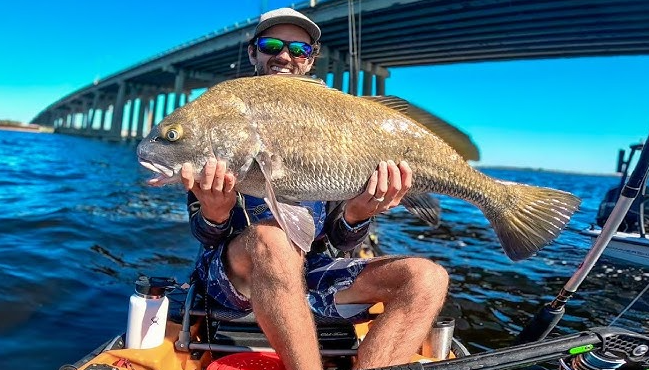
Saltwater: Use corrosion-resistant gear and rinse your equipment with fresh water after each trip. Saltwater kayaks are often designed with more robust materials and self-bailing systems to handle harsher conditions.
Adjusting for Rivers, Lakes, and Coastal Waters
Rivers: Prioritize maneuverability with shorter kayaks and consider a drag chain or anchor for current control. River fishing often requires quick adjustments, so having a paddle leash and easy-to-access gear is crucial.
Lakes: For calm waters, stability is key, so opt for wider kayaks. Use lightweight paddles to reduce fatigue during long trips, and bring plenty of storage for extended outings.
Coastal Waters: Use longer kayaks for better tracking and prepare for waves with self-bailing scupper holes. Consider a spray skirt or additional flotation devices for safety in choppy conditions.
Advanced Tips for Kayak Fishing Enthusiasts
For anglers looking to take their kayak fishing experience to the next level, consider these advanced kayak fishing tips:
Pedal-Drive Systems: Upgrade to a pedal-drive kayak for hands-free propulsion, allowing you to fish while moving.
Kayak Trailer or Trolley: Transporting your kayak can be challenging. A kayak trailer or trolley simplifies and protects your kayak from damage.
DIY Modifications: To keep bait fresh, you can customize your kayak with DIY solutions such as PVC rod holders, insulated fish bags, or a tiny live system.
Essential Tips for Long-Distance Kayak Fishing
Pack Efficiently: When planning a full-day or multi-day trip, organize your gear to minimize weight while ensuring you have all the essentials, such as food, water, and extra clothing.
Weather Preparedness: Always check the forecast and bring rain gear and additional layers to prepare for sudden weather changes.
Emergency Plan: Share your fishing plans with someone and establish a check-in time. For emergencies in remote areas, equip yourself with a flare or signal mirror.
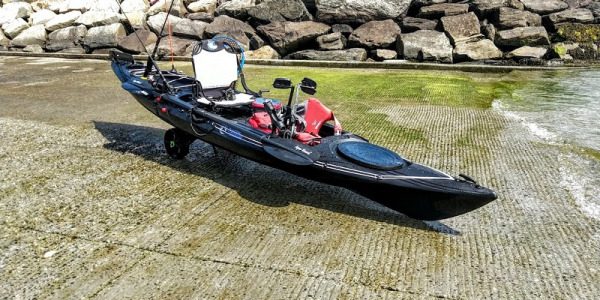
Conclusion: Your Perfect Kayak Fishing Rig Awaits
Setting up your kayak for fishing involves thoughtful planning and the right gear. By choosing the appropriate kayak, organizing your equipment, and customizing your rig for specific conditions, you’re setting yourself up for a successful kayak trip. Remember, preparation is key to enjoying your time on the water. Now that you’re equipped with these essentials, it’s time to hit the water and make memories on your next kayak fishing adventure!


